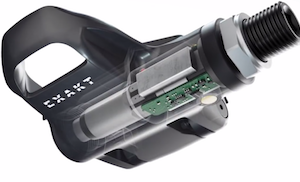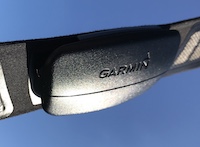Power up with Wattgain
WattGain is now available for you to try out!
Get started
Please read our Privacy Policy.
WattGain, helping to improve your fitness with a power meter!
Power meters have become de facto at all levels of ability in the world of cycle racing. Whether you're a time triallist or a road racer, or even a cyclo-crosser or MTB racer, you'll most likely have been converted to (or at least tempted by) the lure of power data. Knowing exactly how much power and cadence you're putting out is regarded by many as essential when trying to manage sustained, elevated levels of effort. There are of course plenty of people who can't afford this rather expensive add-on, and others who prefer to use their years of experience to ride by feel, but it really is in every racer's interest to consider whether they're losing out by not really knowing how their power output fluctuates throughout a race.
So, what about recreational riders? Surely there's no point in having a power meter for your leisurely jaunt around the countryside? Well, this is certainly a valid viewpoint for some, but what if you're challenging yourself to longer distances or greater average speed? A great many people take part in century rides (100 miles) and feel wrecked by the end of it - but this may be more a case of poor effort management than poor fitness. With Wattgain, we aim to reveal how well we sustain our power and cadence throughout these long rides. We also combine your power and cadence into "Stroke Energy" (the energy output on each pedal stroke) to reveal exactly how much load you're putting on your legs.
Reasons to use Wattgain:
- It's easy to capture cycling power data, but difficult to make sense of it!
- Coaching-style power analysis tools are too detailed for leisure cyclists
- Wattgain analyses your "Stroke Energy" to help you deliver the optimum power!
Connect with Strava
Wattgain integrates with Strava to read your power-based activities. All you have to do is connect with Strava and Wattgain will download whatever is required.
WattGain is now available for you to try out!
All you need to get started is connect with Strava.

Please be aware that we will store your profile and activity data, but won't share it with anyone else.
For more information, please read our Privacy Policy.
The Power Meter Market

If you're new to power meters and aren't sure where to start, you may like to read our Power Meters Compared guide. There are many different types of meter with varying degrees of compatibility; combine this with the variety of manufacturer know-how and pedigree, and it's important to understand what you're buying before you splash the cash.
Power-ready Head Units
If you opt for a power meter that records left and right legs independently then it's important that your head unit (ie, bike computer) supports the recording of any imbalance between legs. Here is some advice for recording power with a bike computer.
HRM vs Power Meter

If you currently use a heart monitor and aren't sure what extra benefits a power meter gives, have a read of how they compare. The choice isn't quite as simple as "one or the other"!
Measuring stroke energy
Stroke energy is the amount of energy you output on each pedal stroke, and depends on both your cadence and current power. It is proportional to torque (the base measurement of probably all power meters), but you may find its meaning a bit more relatable to what your legs are actually doing.

